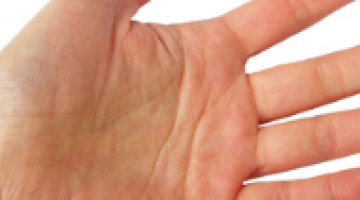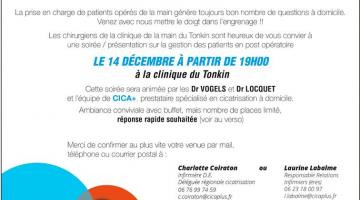responsive
What is a Synovial Cyst ?
Définition
 A synovial cyst is a swollen pocket of gelatinous fluid which develops near the wrist joint. This condition is not serious, and is caused by the distention of the wrist joint (figure 1.) The cyst is usually found on the top of the wrist between the extensor tendons and the fingers. Synovial cysts rarely form on the palm side of the wrist.
A synovial cyst is a swollen pocket of gelatinous fluid which develops near the wrist joint. This condition is not serious, and is caused by the distention of the wrist joint (figure 1.) The cyst is usually found on the top of the wrist between the extensor tendons and the fingers. Synovial cysts rarely form on the palm side of the wrist.
Cause: It is caused by the distention of a joint capsule of the wrist, which is thicker and more resistant in these two locations.
Clinical study
Synovial cysts most often affect young men and women (20-30 years of age), in equal numbers. It can affect children (4+ years old) and older adults (70+ years old).
The cyst appears spontaneously, for no particular reason, and increases in size for a few months. Consultation is sought after the patient notices the cysts, usually following a hand trauma.
The swelling can be small, hardly visible, but painful when the wrist is moved. Or it can be large, unsightly and completely painless. There are several forms of cyst, but the swelling is usually round, compact and of a hard consistency. Sometimes the cysts can move.
Symptomes
responsive
Additional examination
No bone changes are shown in standard radiographies.
Tissue examination confirms the existence of a cystic mass of different density to that of the surrounding tissue.
A standard ultrasound confirms the fluid consistency of the swelling. The ultrasound also identifies the link between the cyst and the radial artery, which is useful for surgery.
Other examinations, such as an MRI scan have not been shown to be useful in pre-operatory or diagnostic terms.
Patient, une prise en charge axée sur
Traitement
Treatment

Evolution
The cyst is benign and unpredictable - some cysts disappear spontaneously, often in the first 6 months or after pressure is applied.
The cyst may reoccur over time, which varies from days to years.
Cysts most often increase progressively in size, and they can become painful and uncomfortable.
Therapy
In most cases, cysts in the wrist do not need therapy as they are often small and not very uncomfortable.
Therapy is necessary if the cyst becomes painful, if the wrist becomes stiff, or there is a loss of hand strength. Therapy is also necessary if the cyst becomes very large, or if there is an aesthetic reason for removal.
There are different types of therapy available bearing in mind that some have a relatively high rate of recurrence:
- Squashing of the cyst with a coin or finger: This technique is only possible in one out of every two cases, due to the thickness of the cyst wall. Squashing the cyst has a recurrence rate of 50%
- Aspiration and Injection: This technique removes the viscous fluid from the cyst. A cortisone injection then helps to destroy the cyst over time. Aspiration and Injection is performed at the clinic, and is a non-surgical procedure. The recurrence rate is 20 to 30 %.
- Surgical removal of the cyst: a technique carried out under local anaesthesia which requires a half-day hospital visit. This technique has a recurrence rate of 20-30%.





